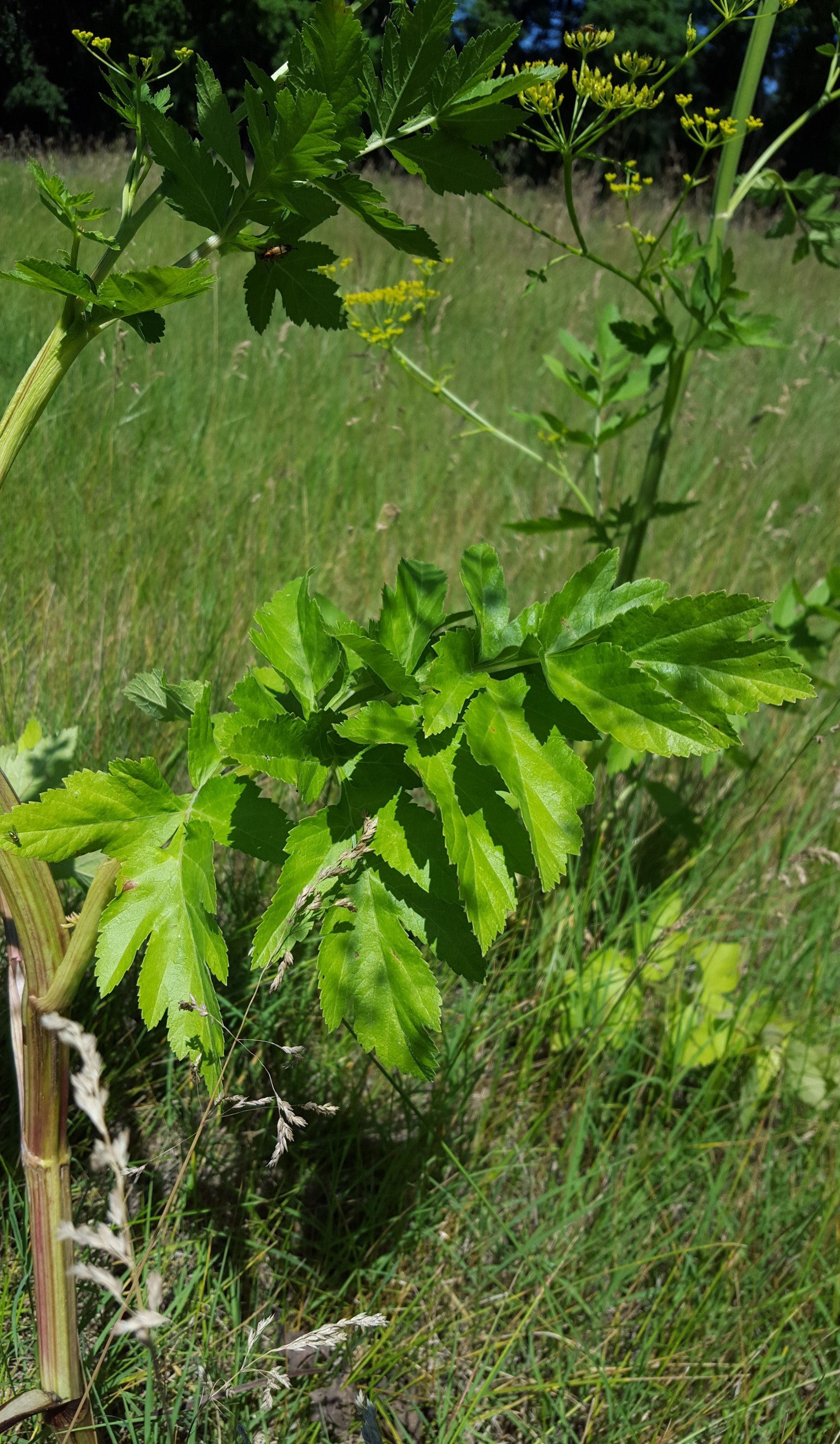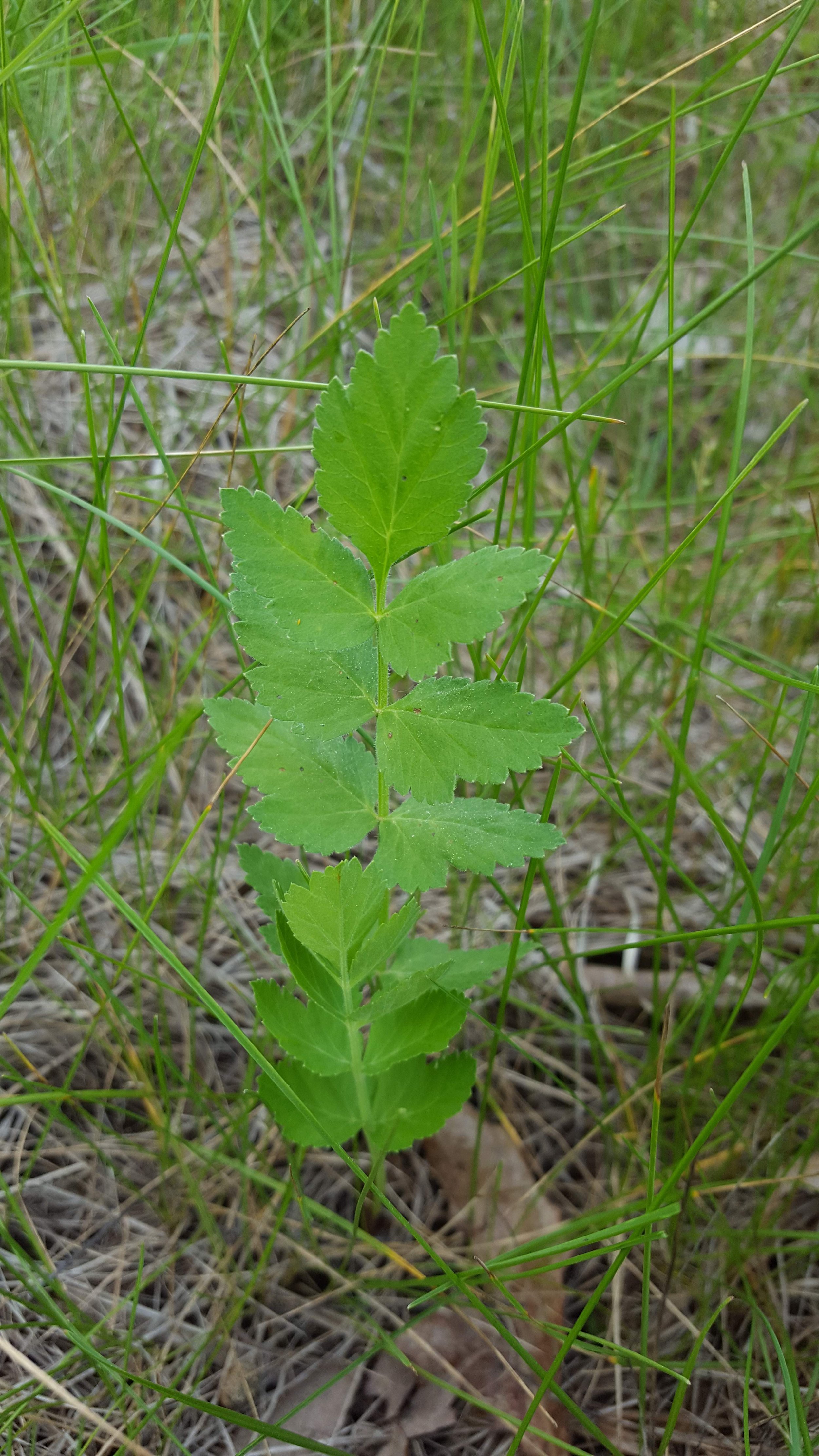March 2022 Invasive Plant of the Month
SICIM Email
Wild Parsnip (Pastinaca sativa L.)
Wild Parsnip (Pastinaca sativa L.) is an herbaceous biennial plant that easily invades disturbed/early successional sites and is typically found along wood edges, prairie plantings, old fields, pasturelands, ditches, riparian areas, and roadsides. Wild Parsnip seedlings germinate throughout the growing season to early Fall and overwinter as a basal rosette of leaves. The following spring (around late April to May), they bolt, producing celery-like stems and then yellow florets in compound umbels. These flowers develop into flat dry fruits called schizocarps and readily burst open when mature. A native of eastern Europe and Western Asia, this species was introduced to North America as a culinary plant and has been reported in all but 4 Indiana counties. WARNING: Some people develop serious photodermitis when exposed to the leaves and sap of the plant.
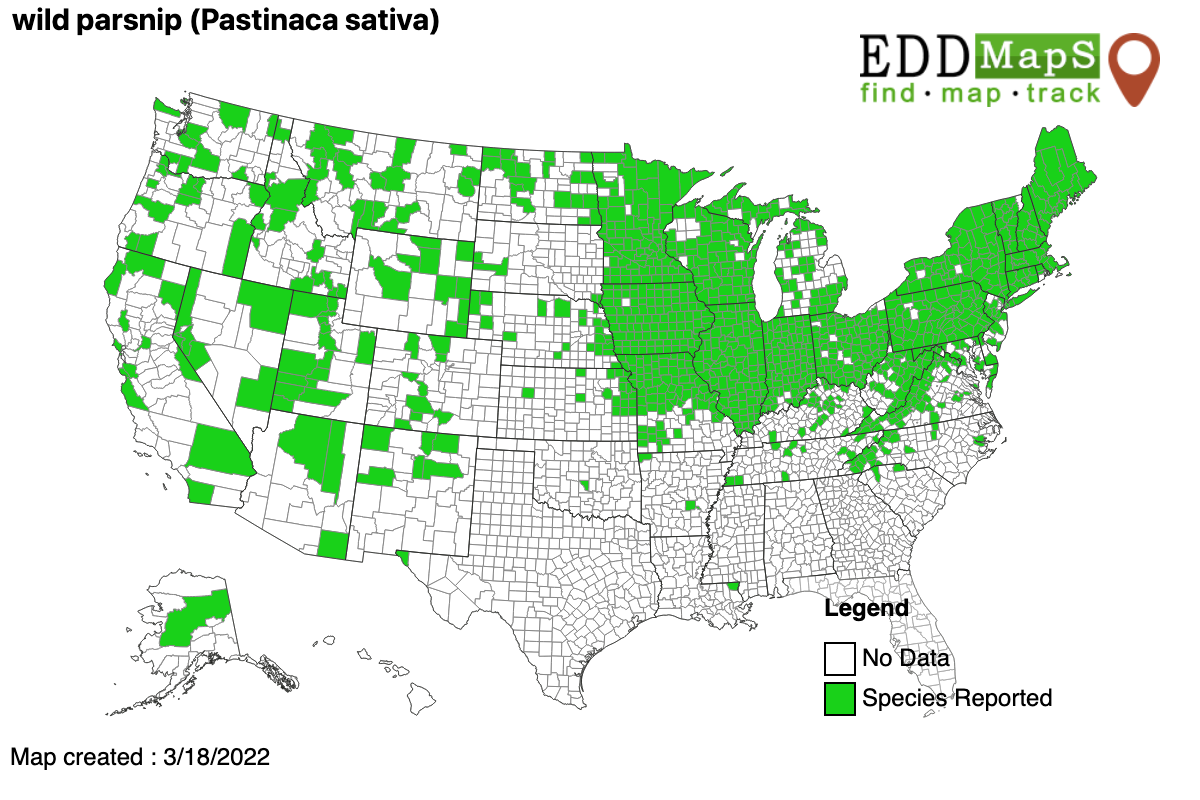
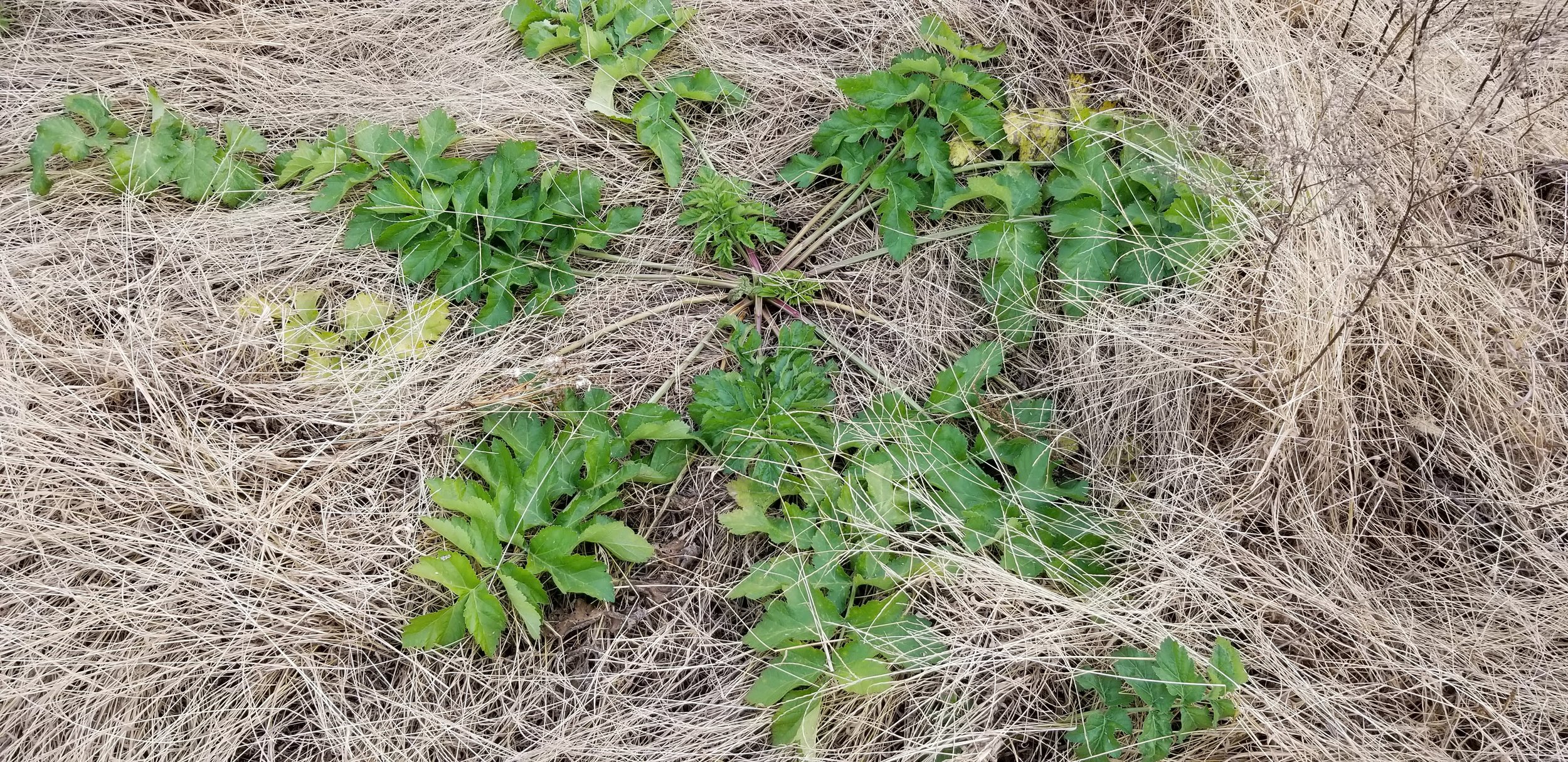
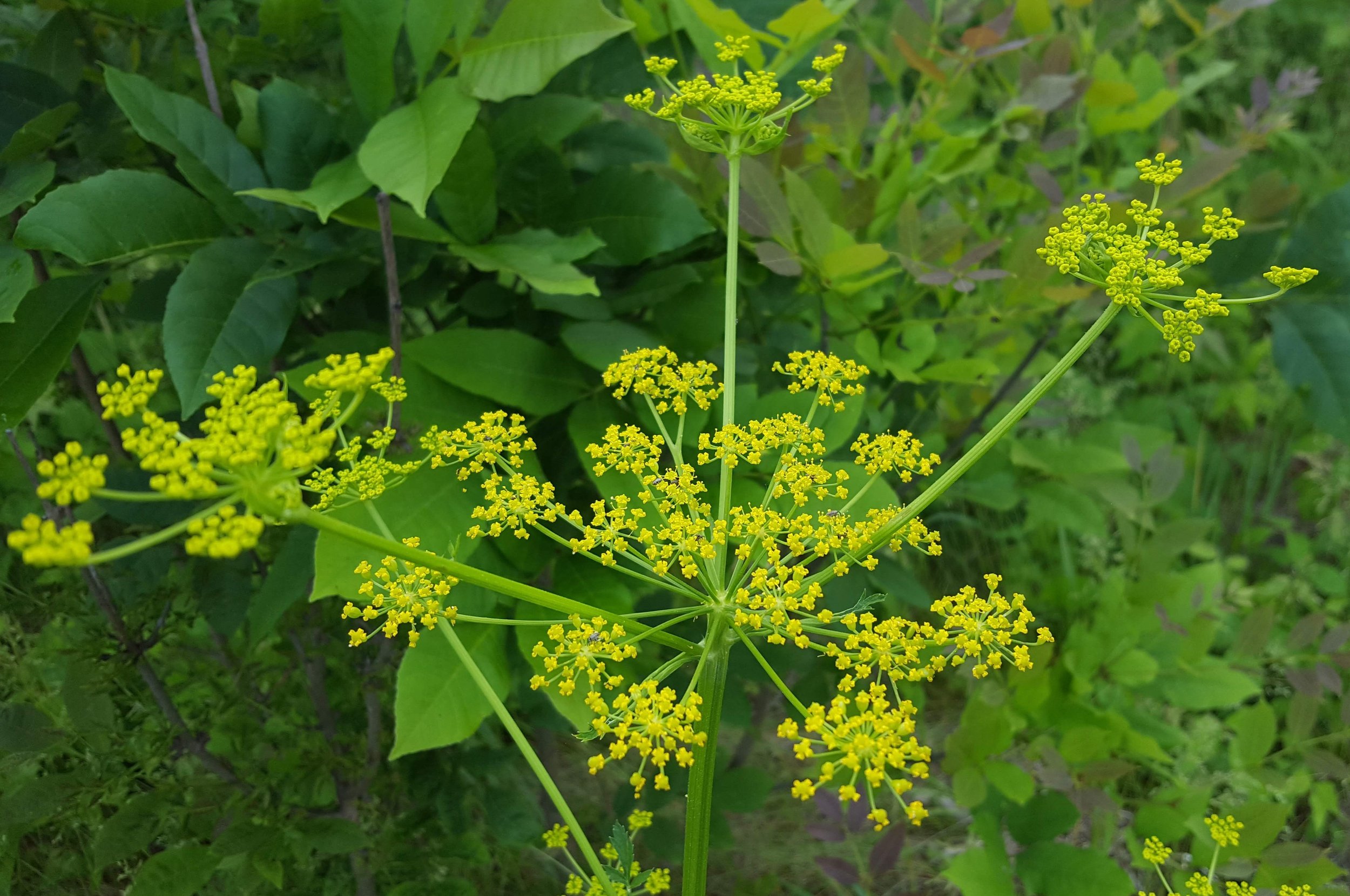
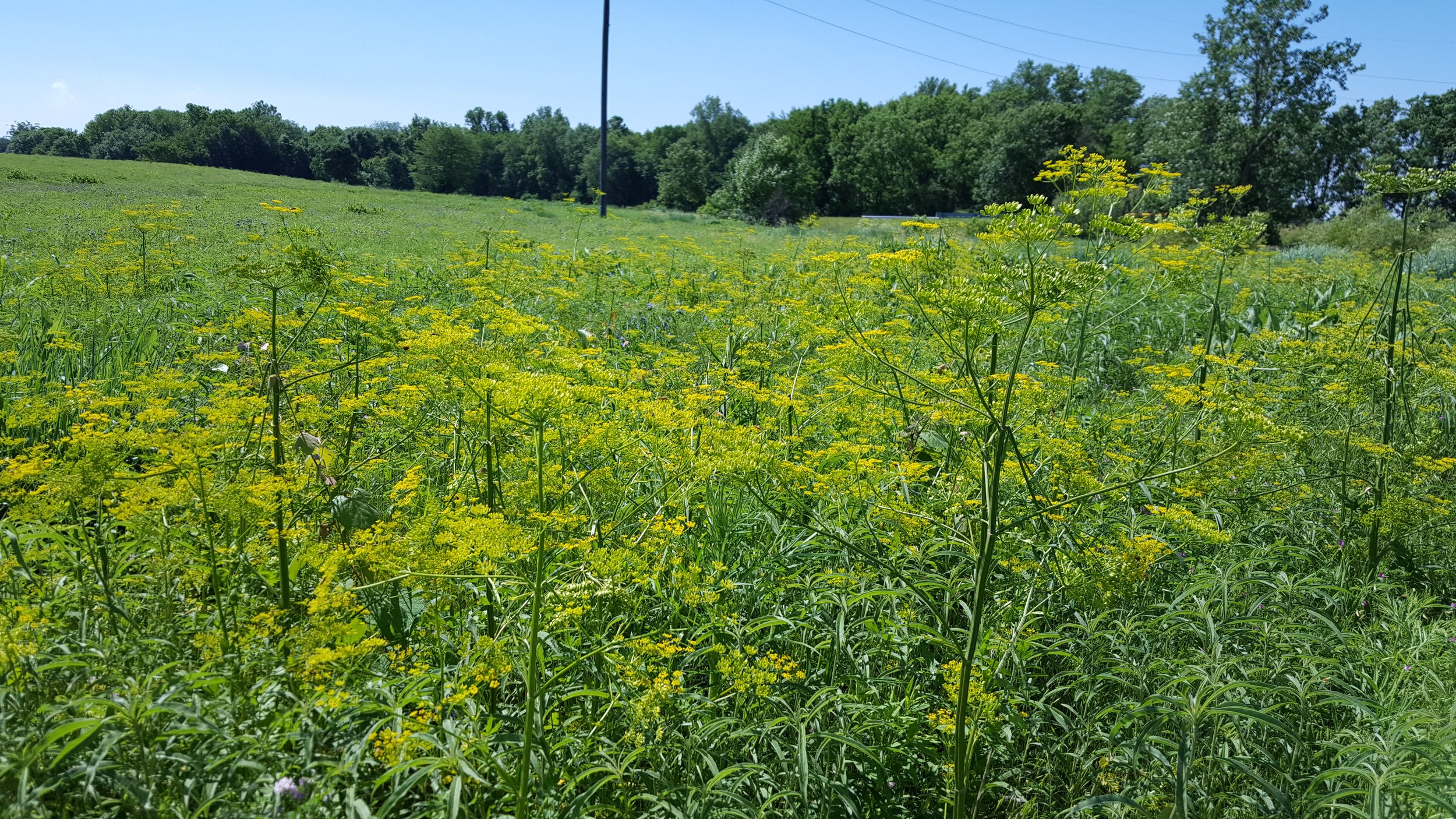
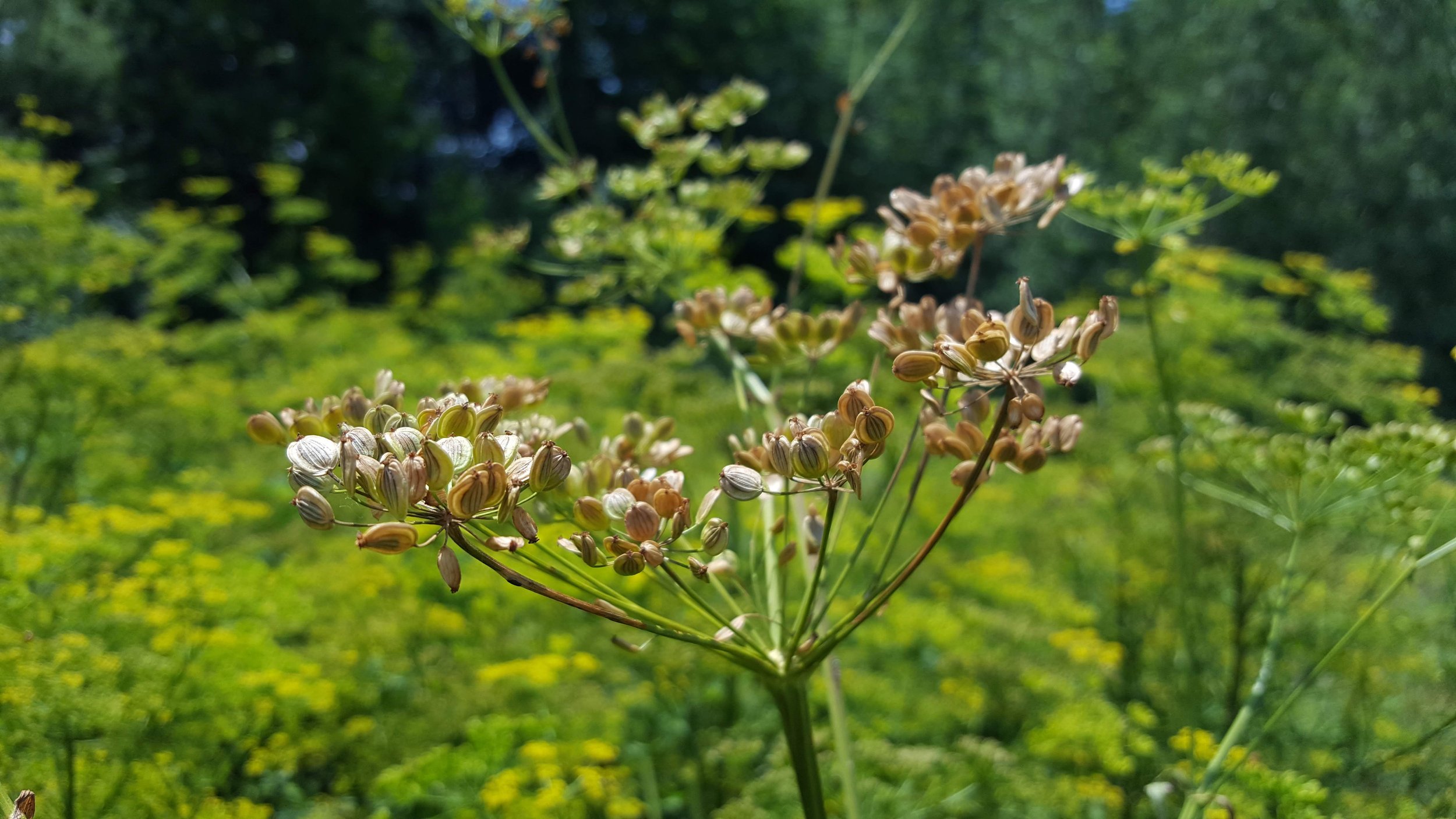
IDENTIFICATION & BIOLOGY: Wild Parsnip is a biennial plant in the Apiaceae family (aka Celery family) that reproduces prolifically via flat, dry fruits. Wild Parsnip starts off as a basal rosette of divided, compound leaves. After bolting, it produces celery-like stems (growing up to 7 ft tall) with alternate, divided leaves (with around 9 leaflets per leaf) and then small yellow flowers in compound umbels. These flowers develop into flat dry fruits called schizocarps and readily dehisce when mature. The fruits mature in mid to late summer and can be easily spread by mowing and agricultural machinery as well as some dispersal by birds, small mammals, wind, and water.
LOOK-A-LIKES: There are no native plant look-a-likes to Wild Parsnip once it has bolted. As a seedling, Wild Parsnip can resemble Golden Alexanders (Zizia aurea). Golden Alexanders can be differentiated by having few leaflets per compound leaf, around 3-5 (instead of the ~9 that Wild Parsnip normally has).
HABITAT & DISTRIBUTION: Wild Parsnip prefers full sun to part shade and moist to mesic soil conditions. It can be found in disturbed areas wood edges, prairie plantings, old fields, pasturelands, ditches, riparian areas, and roadsides. It has been reported in has been reported in all but 4 Indiana counties and is found in throughout the Midwest, Great Plains, Mid-Atlantic, and Northeastern US states.
ECOLOGICAL THREAT: Wild Parsnip can form dense stands in disturbed areas and set back desired plant growth, especially in new plantings. An individual plant can produce over 2,000 seeds, and those seeds can persist in the soil for up to 4 years. Because of the many methods of dispersal (via mowing and agricultural machinery as well as some dispersal by birds, small mammals, wind, and water), Wild Parsnip can expand its populations quickly and easily produce satellite populations.
CONTROL:
WARNING: Some people develop serious photodermitis when exposed to the leaves and sap of the plant. Use caution when managing this plant.
Prevention: Wild Parsnip often is inadvertently spread by mowing, road maintenance, or agricultural machinery. Mow infested areas along roadsides, ditch banks, forest and field edges before seed matures. Also, do not plant Wild Parsnip seeds!
Manual: Can be effective for single plants or very small infestations. Young plants can be pulled or dug up. Older plants, before flowering, can be controlled by severing the taproot below ground. Always wear protective clothing, including gloves and eye protection.
Mechanical: Continuous mowing can also be used but beware that mowing only once or twice per year may actually increase Wild Parsnip populations. Always wear protective clothing, including gloves and eye protection.
Chemical: Effective for large infestations and for spot spray applications to individuals and clumps of plants. Herbicide application should be performed while the plant is actively growing and before flowering. This may require at least two rounds of foliar treatments to get stragglers. Treatment in fall is preferrable, but individuals can be treated in the early spring as well. The following herbicide active ingredients are recommended:
· Glyphosate: Use herbicides containing at least a 41% concentration of glyphosate and follow label directions to mix a 2% spray solution. Thoroughly wet all surfaces of the plant, but not to the point of runoff. Use caution as glyphosate is non-selective and will damage or kill any plant it contacts.
· 2,4-D Amine Salt: Use herbicides containing 46.8% active ingredient and follow label directions to mix a 1% spray solution. This spray will not harm grasses, only other broadleaf plants.
IMPORTANT: The pesticide label is the law! When using any chemical control, always read the entire pesticide label carefully, follow all mixing and application instructions and use all personal protective gear and clothing specified. Contact the Office of Indiana State Chemist (OISC) for additional pesticide use requirements, restrictions or recommendations.
Maintenance: Follow-up treatments will be required, as seeds already present in the soil will sprout.
REFERENCES & OTHER RESOURCES:
https://www.eddmaps.org/distribution/uscounty.cfm?sub=6147
https://www.illinoiswildflowers.info/weeds/plants/wild_parsnip.htm
https://www.entm.purdue.edu/iisc/pdf/plants/Pastinaca_sativa.pdf
https://dnr.wisconsin.gov/topic/Invasives/fact/WildParsnip.html
https://cdn.shopify.com/s/files/1/0145/8808/4272/files/A3924-15.pdf
LOOK-A-LIKE REFERENCES:
https://www.illinoiswildflowers.info/prairie/plantx/gld_alexanderx.htm
